
A Somewhat Puzzling
Project Week
Yonah
Borns-Weil
A Somewhat Puzzling Project Week
by Yonah Borns-Weil
![]()
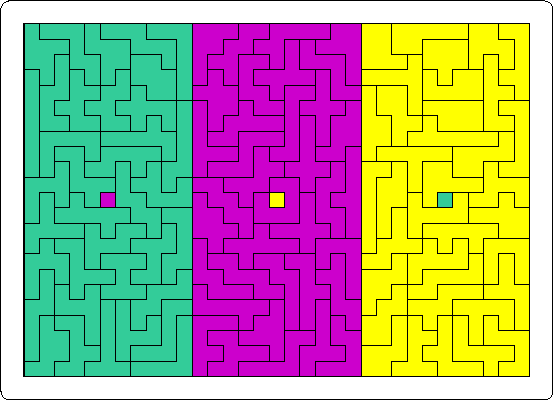
If two equilateral triangles put together
make a diamond, what would three be called?
How about a triamond? With four-triangle
tetriamonds, there are actually three ways of
fitting them together. 
![]() Try to imagine them in
your head. Then add on another triangle, and
there are four combinations. This might be the
final step a human imagination can take, as
there are 12 hexiamonds, 24 heptiamonds, and
66 octiamonds. However, these somewhat scarier “polyiamonds” can fit together into a pattern such as this one on the right.
Try to imagine them in
your head. Then add on another triangle, and
there are four combinations. This might be the
final step a human imagination can take, as
there are 12 hexiamonds, 24 heptiamonds, and
66 octiamonds. However, these somewhat scarier “polyiamonds” can fit together into a pattern such as this one on the right.
Kadon Enterprises, a small company out of Maryland, cuts out combinatorial pieces like these polyiamonds from acrylic, and sells them as (sometimes extremely difficult) puzzles. There’s also even an aspect of abstract art to them.
But Kadon goes way beyond just polyiamonds. For instance, if two squares make a domino, there should also be trominoes (there are 2), (5) tetrominoes, and the slightly more famous (12) pentominoes. And if you guessed that I wouldn’t be mentioning “polyominoes” unless they could form puzzles, too, you’d be absolutely right. On the top is an amazing array of all 108 heptominoes, which can be bought as acrylic pieces to fit into a 1½-square-foot tray.
Polyiamonds and polyominoes are two examples of polyforms, which consist of all of the combinations of a certain shape put together. There are polyhexes, polycubes, and polytans, which are combinations of right isosceles triangles named because of their resemblance to tangrams. Regardless, I’ve collected Kadon puzzles for many years, so for project week, I decided to travel down to southern Florida, where Kate Jones, the brainmaster of the company, was staying for the winter.
My adventures began the morning after we arrived, when I was ruthlessly roused out of my slumber by the alarm clock. But my frustration instantly evaporated into excitement as I remembered that for the first two days, I’d be helping out Kate (my project week mentor) with her tent in an art show by explaining the puzzles to everyone.
The goal was to, as her response email directed, “get a really good feel for interacting with people not as skilled as you for whom we nevertheless seek to provide a happy, exciting experience that leaves them feeling good about the puzzles even if they don't buy them on the spot.” And while a certain segment of that statement did flatter me, I can say with the utmost certainty that with a decent amount of practice, most people could attract similar praise. Putting it quite kindly though, many of the booth’s visitors could’ve used a bit more practice. They would use up all the easy pieces first, jam a square into a clearly triangular space, not realize the pieces could be flipped over, and even be one piece away from completion before dumping the puzzle out in frustration.
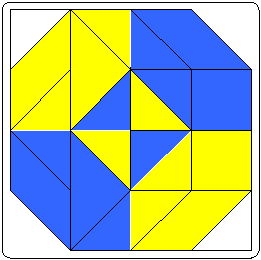
![]() But that was just part of the challenge! We
attempted to make everybody feel good about themselves by the
time they left. And of course, in between customers, my mom
and I could try out plenty of the puzzles. This one, made of all
the combinations of one or two blue and yellow triangles
combined, was a particular favorite.
But that was just part of the challenge! We
attempted to make everybody feel good about themselves by the
time they left. And of course, in between customers, my mom
and I could try out plenty of the puzzles. This one, made of all
the combinations of one or two blue and yellow triangles
combined, was a particular favorite.
After two days of the art show, it was then time to pack the very large tent into the relatively small van. In fact, it was almost a bit like a puzzle on its own. One good night’s sleep later, Stage II of project week began. In her tiny Miami home nicknamed “Kadon South”, Kate led me through all the ins and outs of her life. As much of it involved playtesting (aka, playing with) new prototypes of puzzles, I had an absolute blast. I had finally found someone who knew more about the puzzles than I did, albeit being the maker.
After a goodbye to Kate, I was ready for the final journey to Baltimore, to visit the laser shop where the puzzles are made. That night, I stayed in their house with Dick, Kate’s husband, and tried out some of the more challenging puzzles they had to offer:
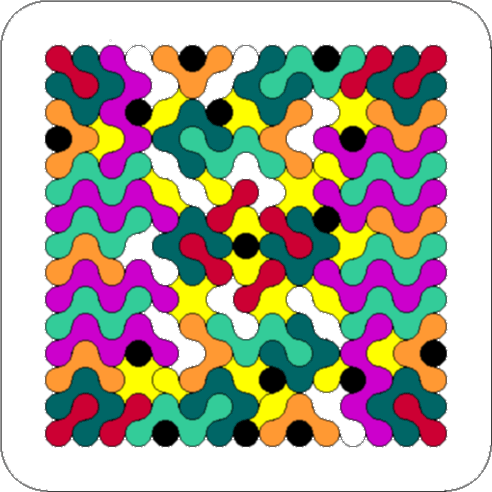

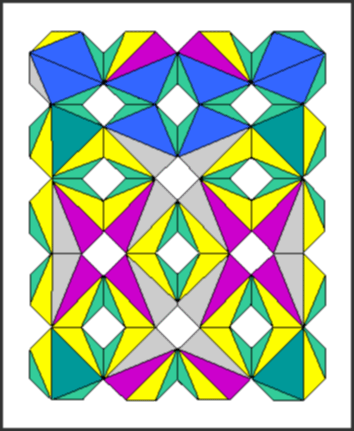
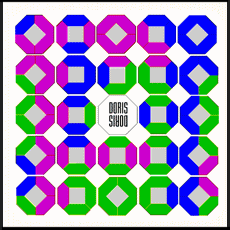
Finally, it was time to visit the laser shop, which was a bit of a surprise. Like most normal people who have watched spy movies, I had assumed for many years that laser beams were single long beams of color. Relatively recently (a few years ago) I figured out that only the end of the beam is visible. However, these machines used infrared beams, which are entirely invisible to humans. (Apparently bees can see them just fine.) To me, it looked like the plastic sheets were simply cutting themselves. It was remarkably uncanny. Before leaving the laser shop, the worker there made us a small engraved piece of acrylic.
Before this report is over, I know everyone is wondering what the hardest Kadon puzzle is. When asked that at the show, and many people asked that before having trouble with a mid-level puzzle, Kate would point to this beauty:
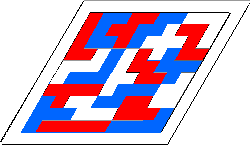
However, the true hardest puzzles are too large and difficult to produce to bring to shows. They tend to look like this:
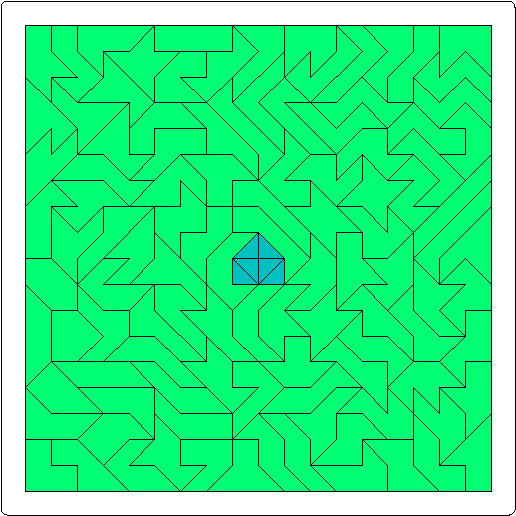
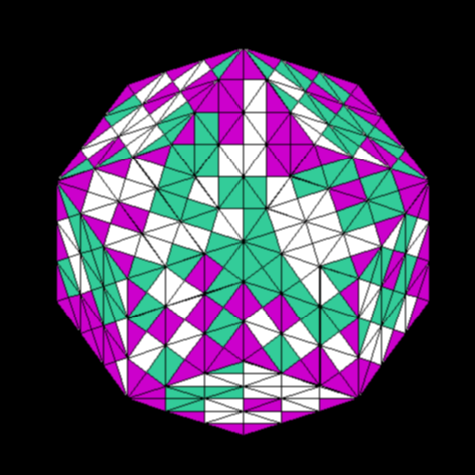

Oh yeah.
All images ©2011 Kadon Enterprises, Inc. All rights reserved.
Text by Yonah Borns-Weil, reprinted by permission.